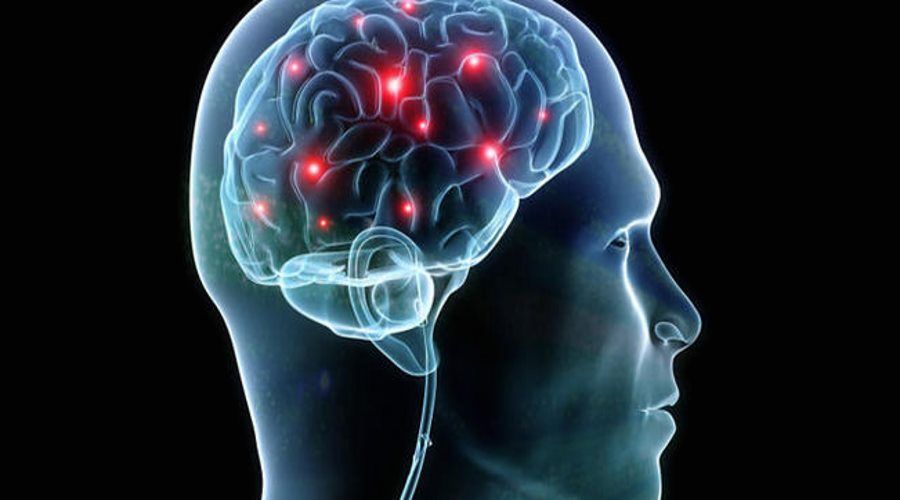
Computers connected to the brain It’s no longer a fantasy
Computers connected to the brain? This is no longer a fantasy
There is still a long way to go to control computers on a daily basis without a mouse and keyboard. But already today, thanks to the use of the electrical activity of the brain, paralyzed people can communicate with the world, according to Prof. Isabella Rejer.
Through the interface m zg-computer paralyzed people today are not only able to "talk" with their relatives, but also browse the Internet or turn on a light in a room by themselves. And all this thanks to electrodes placed in a special cap on the head. These read the bioelectric activity of the m zgu, which ra carries specific information. This one is transmitted to the computer.
– This is not the only possibility of using computer in responding to the activity of m zg in the life of os b having mobility problems. This type of solution has been used Also in rehabilitation,” points out Prof. Izabela Rejer of the Department of System Engineering in the Information Technology Department of the West Pomeranian University of Technology in Szczecin.
He recalls that research on action-controlled interfaces m zgu have been going on since the 1970s, admittedly. XX w., but – according to – "we haven’t gotten far yet". The professor believes that it will be at least a few more decades before it will be possible to smoothly and directly control a computer without a mouse and keyboard.
– We would like to see such a vision come true. The problem is that the electrodes, which re located on the cap, which ry reads from the surface of the head the bioelectrical activity of the m zgu, collect signals from very large groups of neuron – realizing The various functions. Meanwhile, the detailed ły news e.g. in speech centers are encoded by microscopic clusters of com rek, impossible to read with cranial electrodes. However, there is another solution – placing the chip directly into the m zgu! – says the researcher. In doing so, he notes that scientists and doctors, however, prefer solutions that re are the least invasive. However, according to prof. Rejer develop j more invasive solutions, such as. placement of the chip in m zgu, is inevitable. Already such implants are being tested with volunteers .
– Paralyzed from the neck in d ł person, in the m zgu kt rej placed a chip connected to a robotic arm, is able to make deliberate, intentional movements with that arm, so it can e.g. feed itself. This would not be possible if the electrodes were on the surface of the head, the researcher notes.
According to her already wkr tce there may be mobile and convenient devices on the market that allow 24-hour monitoring of m zgu.
– Probably in the next few years the impractical caps will be replaced by electrodes placed e.g. in comfortable headbands,” predicts Prof. Rejer. He adds that it is already possible to find solutions on the market that allow wireless communication between the EEG cap and the device receiving the signal, but they are still far from "actual mobility".
Why continuous monitoring of m zgu? The researcher points out, for example. on a remote control in the plane or seniors. The corresponding program will m head signal the physical state of the os b. The app may be able to awaken a snoozing pilot, or notify an ambulance in case a senior has a stroke or faints, the expert points out.
According to Prof. Rejer the fastest m activity monitoring devices zgu will be used in rehabilitation at home, e.g. os b after a stroke. They are currently being clinically tested. What is the principle of such a system? The patient has a cap with electrodes on his head connected to a computer interface, to which the re of which are transmitted readings of m zgu. On the patient’s hand is an electrical stimulator, which ry sends impulses to its muscles. The patient is asked e.g. o imagining the movement of the right or left hand. The system reads the activity of m zgowa, looking for a pattern in it characteristic of the movement of the indicated hand. If this pattern is detected, the muscles in the hand are stimulated electrically, causing it to actually move.
– At the same time, on the screen the patient sees an avatar of his hand, which ry moves along with the real hand. Both effects, on the one hand, reinforce the learning process of the neuron’s , while on the other hand they increase patient motivation to continue working, and this translates into a significant acceleration of rehabilitation,” notes the researcher.
Prof. Izabela Rejer heads the Neuroanalysis Team in the Department of System Engineering in Informatics of the West Pomeranian University of Technology in Szczecin. Scientists working there are developing algorithms that re aiming to improve EEG signal quality, they are looking for a pattern of In m activity zg characteristic of specific conditions in the mind, and are researching interfaces and computer applications that allow people with motor disabilities to access digital information.

